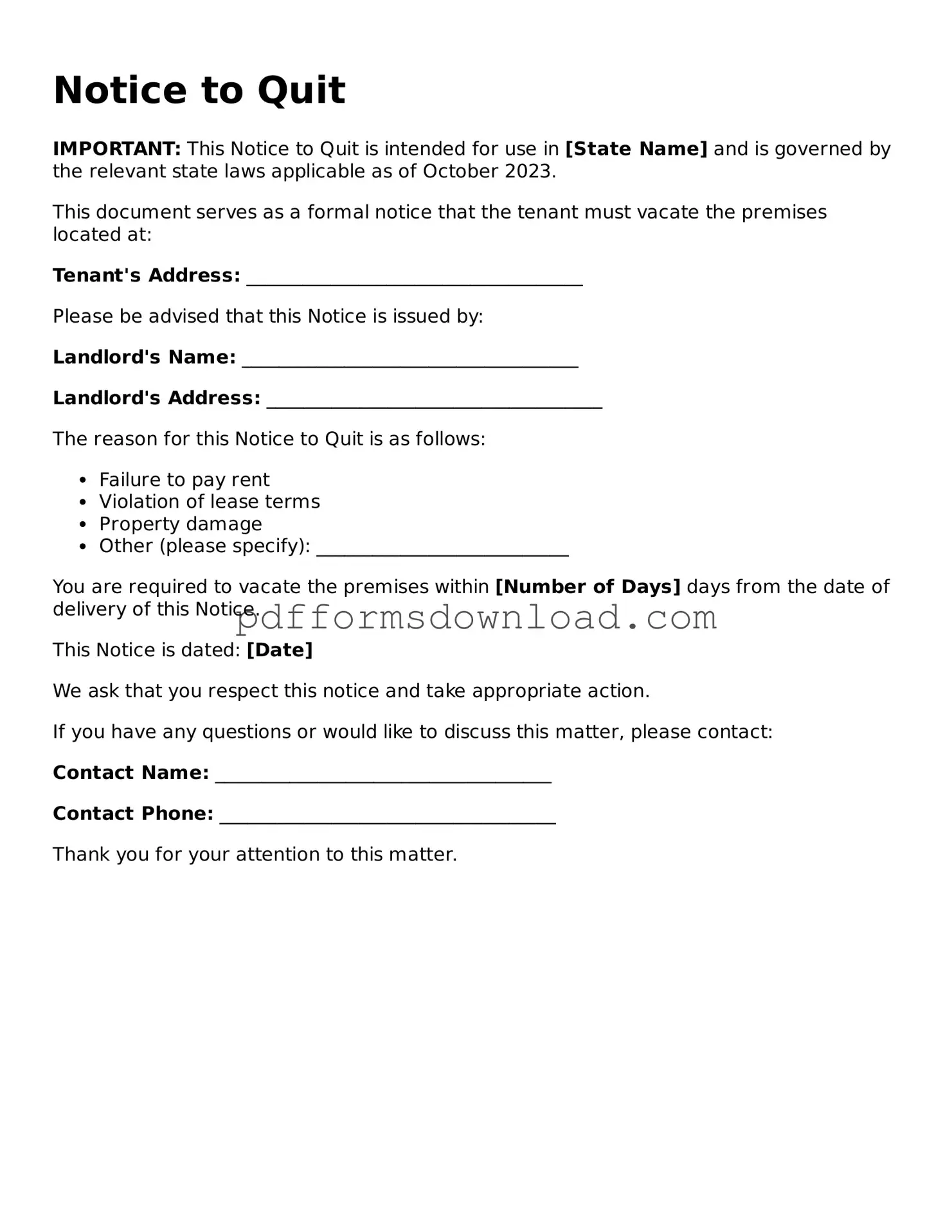What is a Notice to Quit form?
A Notice to Quit form is a legal document used by landlords to inform tenants that they must vacate the rental property. This notice is often the first step in the eviction process. It outlines the reasons for the eviction and provides a timeline for the tenant to leave the premises.
When should a landlord use a Notice to Quit?
A landlord should use a Notice to Quit when a tenant has violated the terms of the lease, such as failing to pay rent or causing damage to the property. It can also be used if the landlord needs the property for personal use or if the lease has expired.
How much notice must be given to the tenant?
The amount of notice required varies by state. Generally, landlords must provide a specific number of days for the tenant to vacate, which can range from 3 to 30 days, depending on the reason for the eviction. Always check local laws to ensure compliance.
Can a tenant contest a Notice to Quit?
Yes, tenants have the right to contest a Notice to Quit. They can respond to the notice, negotiate with the landlord, or present their case in court. It's important for tenants to understand their rights and seek legal advice if needed.
What happens if the tenant does not leave by the deadline?
If the tenant does not vacate the property by the deadline specified in the Notice to Quit, the landlord may proceed with legal action to evict the tenant. This typically involves filing an eviction lawsuit in court.
Is a Notice to Quit the same as an eviction notice?
No, a Notice to Quit is not the same as an eviction notice. The Notice to Quit is a preliminary step that informs the tenant of the need to leave. An eviction notice is a legal document issued after the Notice to Quit if the tenant fails to comply.
Do I need to provide a reason for the Notice to Quit?
Yes, it is generally advisable to include a reason for the Notice to Quit. Providing a clear reason helps the tenant understand the situation and can also be important if the matter goes to court. However, the requirements may vary by state, so it’s best to review local laws.
